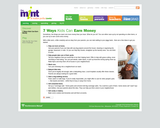
This resource provides students with seven ways they can earn money and start adding to their piggy bank.
- Subject:
- Social Studies
- Material Type:
- Reading
- Provider:
- The Mint
- Author:
- the mint
- Date Added:
- 02/26/2019

This resource provides students with seven ways they can earn money and start adding to their piggy bank.

In this lesson, students identify the steps for success in saving, give examples of how saving for the future means giving up things today, and set a savings goal and develop a plan to reach it.
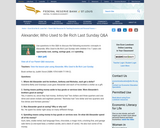
These questions can be used to discuss the following economic concepts in the book Alexander, Who Used to Be Rich Last Sunday: opportunity cost, saving, savings goal, and spending.

In this lesson, students listen to a story and answer questions about lending in Bangladesh. They complete a diagram that shows the impact of lending on a community. Working as a class, they compare the similarities and differences between banks lending in the United States and the Grameen Bank lending in Bangladesh. Students work with a partner to estimate profits based on Sufiya's prices and costs in the book.

In this lesson, students read about the cubs' spendthrift ways and how Mama and Papa Bear teach them to earn and save. Students learn about figures of speech, and they create "critter banks" in which they can begin to save.
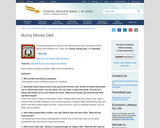
These questions can be used to discuss the following economic concepts in the book Bunny Money: human saving, savings goal, and spending.
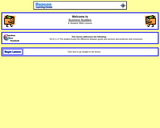
In this interactive web lesson, students are introduced to the economic concepts of producers and consumers. Students choose multiple choice answers or type in short responses tp questions about earning money, goods and services, and producers and consumers. New vocabulary is defined for students and appears in bold print.
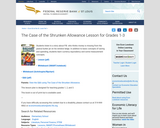
In this lesson, students listen to a story about P.B., who thinks money is missing from the peanut butter jar on his window ledge. Students also learn about currency equivalency and measurement concepts.
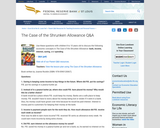
These questions are used to discuss bank, income, interest, saving, and spending in the story, The Case of the Shruken Allowance.

These questions can be used to discuss the following economic concepts in the book A Chair for My Mother: human resources, income, saving, and savings goal.

Students will learn about the concepts of work, choice, spend, earn, and save.
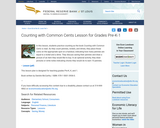
In this lesson, students practice counting as the book "Counting with Common Cents" is read. As they count pennies, nickels, and dimes, they place those coins on the appropriate spot on a handout, indicating how many pennies are equal to a nickel and a dime. They discuss saving their pennies and draw a picture of an item they would like to buy. In an optional activity, they draw pictures or write notes indicating chores they would do to earn 10 pennies.

In this activity, students will design his or her own money based on the idea that United States currency uses symbols to convey meaning.
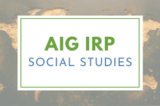
After the teacher has read books about earning money and benefits of saving, disadvantages of borrowing, and decisions about saving versus spending or giving, the teacher will lead a discussion with students about how they have personally earned money and what they did with it. She will allow them to think about whether or not they think they made wise decisions when they saved, borrowed, spent or gave money and why they feel this way. Then the teacher will introduce the students to the “store” they are going to have in class. Higher level students will create scenarios for classmates to consider what they would do in different situations involving earning money, saving money, spending, or borrowing. This lesson was developed by NCDPI as part of the Academically and/or Intellectually Gifted Instructional Resources Project. This lesson plan has been vetted at the state level for standards alignment, AIG focus, and content accuracy.

This first-grade inquiry features an investigation of economic decision making through the context of how families manage their money. In examining the costs and benefits associated with making decisions about spending and saving money, students should be able to develop an argument with evidence to answer the compelling question “What choices do we make with our money?â€

Students will use an online game to learn how bartering works and why people chose to use money systems instead.
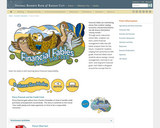
This resource contains interactive online tales to teach students useful financial management skills. Included with the resource are enrichment activities, family activities, and teacher resources. Students can choose the Read to Me mode to have the story read to them or the Read to Myself mode to read the story themselves.
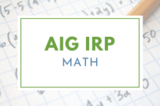
The U.S. Mint website for kids is a wonderful resource that includes many games that allow students to practice counting and using money in many ways and includes lots of facts about the history and design of U. S. coins. One interesting part of the website includes words and phrases that include coin names. Students can learn about these words and phrases as they solve money problems and then create their own. This lesson was developed by NCDPI as part of the Academically and/or Intellectually Gifted Instructional Resources Project. This lesson plan has been vetted at the state level for standards alignment, AIG focus, and content accuracy.
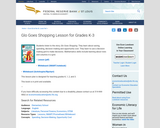
In this lesson, studnets learn about saving, spending, decision making and opportunity cost. They learn to use a decision-making grid to make decisions. Mathematics skills include learning about rows and columns in a grid.

In this lesson, students will learn about the concepts of work, choice, spend, earn, and save.